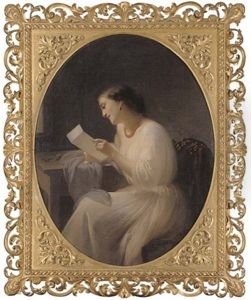Michelangelo Pittatore Paintings
Michelangelo Pittatore was an Italian painter born in 1825 in Asti, Piedmont. He was a prominent figure in the Italian artistic scene of the 19th century, known for his contributions to the landscape and historical painting genres. Pittatore's early life was shaped by the cultural atmosphere of Piedmont, a region with a rich artistic heritage that profoundly influenced his development as an artist. He initially trained under the guidance of local painters before moving to study in larger artistic centers of Italy, where he was exposed to the works of the Renaissance and Baroque masters. These experiences played a significant role in shaping his artistic style, which combined elements of classicism with the emerging Romantic sensibilities of his time.
Throughout his career, Michelangelo Pittatore dedicated himself to capturing the beauty of the Italian landscape, as well as historical and biblical scenes, with a particular emphasis on the use of light and shadow to create depth and emotion in his works. His paintings are characterized by their detailed realism, vibrant colors, and the ability to convey profound narratives through visual means. Pittatore was also known for his skill in portraying the subtle nuances of the natural world, making his landscapes not just backgrounds for his historical scenes but central elements of his compositions that reflected his deep appreciation for nature.
Pittatore's contributions to Italian art were recognized in his time, and he was involved in various artistic circles and exhibitions, contributing to the spread of new artistic ideas and techniques. His works were exhibited in Italy and abroad, gaining him a reputation that extended beyond his native Piedmont. Despite the acclaim, Pittatore remained deeply attached to his roots, often depicting scenes inspired by the history and landscapes of Piedmont, which he imbued with a sense of romantic nostalgia and historical depth.
Michelangelo Pittatore passed away in 1903, leaving behind a legacy as one of Piedmont's most distinguished artists of the 19th century. His paintings continue to be admired for their beauty, technical skill, and the way they encapsulate the spirit of an era that was on the cusp of modernity while remaining deeply connected to its past. Today, his works are preserved in museums and private collections, serving as a testament to his enduring impact on the world of art.

